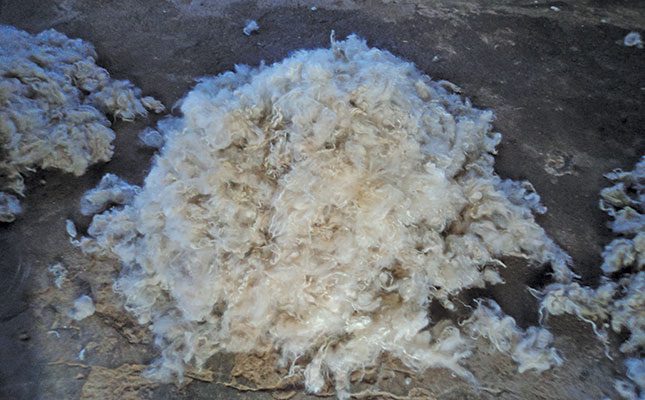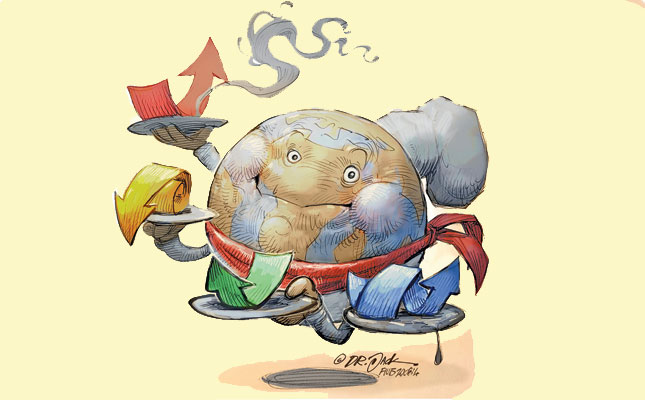
Photo: Roelof Bezuidenhout
In the previous article (see FW of 28 July 2023), we described the grasses whose seeds pose a particular problem for mohair producers, and how to remove or avoid these grasses. We now explain what to do if your flock has already picked up seed.
Where the seed is still green, dip the goats in any approved dipping agent about six weeks before shearing. The more often you dip before shearing, the better; this will speed up the rotting process of the seed in the fleece.
Two weeks before shearing, break the caked mohair (clumps of hair held together by seed) on the goats by hand, then dip the animals with an approved dipping agent to improve the appearance of the hair and remove loose seed.
With seed that has already ripened, break the clumps of mohair six weeks before shearing, then dip the animals. Dip them again for a second time two weeks before shearing.
During this period, keep the goats away from seed in veld in low-lying areas, as spear grass is particularly common here. Put the flock onto scrub veld to help with the combing process.
Heavily pregnant animals are highly sensitive to handling, and can abort after dipping, so handle these animals with great care or leave them alone. It’s more important to obtain a new kid than to get an adult animal with a seed-free fleece.
Ideally, keep your pregnant ewes in the cleaner camps. These camps, however, usually have less grass, so provide the ewes with additional feed; being pregnant, they need optimal nutrition. By feeding these animals properly in these camps, you can ensure both a clean fleece and a strong newborn kid.
Classing
Use the following factors to class seed-contaminated mohair:
Fineness: Keep age groups (adult, young goat, and kid mohair) separate. Divide each age group again into two: a strong line and a fine line. In winter, add strong young goats to the adults and strong kids to the young goats.
Length: Contaminated mohair is usually divided into two lengths: long and short. Long mohair includes all lengths from C-length upwards – in other words 100mm and longer. Short mohair is a D-length and shorter, in other words 90mm and less.
Degree of contamination: After you have divided the lines according to fineness and length, divide them into three degrees of contamination: light, medium and heavy.
Light: Save all clean mohair, even if there’s a bit of seed here and there. Hair with a minor seed problem should not be confused with lightly contaminated hair.
To test the difference, take a handful of mohair. If you feel seed in more than two or three places, the hair is lightly contaminated.
Medium: This hair has more seed in it, but does not contain any caked mohair.
Heavy: This seedy mohair contains all the caked mohair.
There are additional ways to reduce the degree of contamination and so increase the price:
With light contamination, you can physically remove the seed, or fluff out the hair by hand; fluffed, clean mohair is better than seedy mohair.
The price of properly fluffed mohair is only about 5% lower than for clean hair, provided it has been micron-tested. In the case of heavily caked mohair, break the lumps and pull them apart. This will improve the hair.
A machine that removes seed mechanically is available. Although this process breaks the fibres, such hair is usually worth more than seedy hair. No buyer’s house will chemically treat and clean hair from a single clip, as it is uneconomical to do so. The process requires tons of mohair.
For more information contact Pierre van der Vyver at [email protected].











